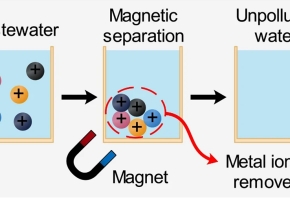Study spearheads the chemical fingerprint of Viking weapons

A new study examining the chemical make-up of iron artefacts from the Viking age aims to uncover new insights into where they came from that could reveal previously unknown information about historic events.
Scientists from the University of Nottingham are leading the study that will examine 90 iron Viking-age artefacts. These are weapons that were used in battles at Fulford in North Yorkshire and Bebington Heath on the Wirral. Other material comes from the Viking camp at Torksey in Lincolnshire, and from the former Viking seaport of Meols.
Fulford was the location for a battle in AD 1066 between Norse invaders and the Anglo-Saxons, immediately before the better-known battle of Stamford Bridge. The archaeological material consists of iron weapons found at a number of short-lived iron recycling sites that were abandoned by the Norse victors at Fulford when they were defeated at Stamford Bridge five days later.
The iron material from Bebington Heath was recovered from the possible location of the AD 937 battle of Brunanburh between Norse-Scottish and Anglo-Saxon armies. The material has been typologically assigned to the late Saxon/Viking period and shows parallels with the artefacts from Fulford.
The researchers from Nottingham are working with the University of Toulouse and the University of York to identify the chemical isotope signature of the iron using Lead, Strontium and Iron Isotope Analysis. Lead isotope analysis has proved effective for provenancing ancient metal artefacts of silver and copper and the team have already conducted a successful pilot study on a smaller sample of artefacts that showed this combination of analyses is effective for provenancing iron artefacts, even when the items are highly corroded.
Source: University of Nottingham Press







